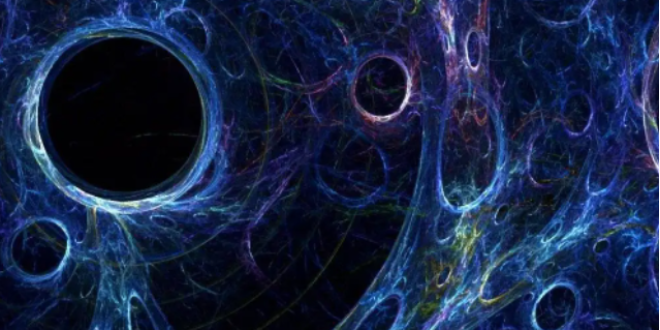Dark matter, an elusive substance that makes up most of the mass of the universe, likely consists of massive particles called gravitons, which first appeared in the first instant after the Big Bang. A new theory suggests that these hypothetical particles may be “cosmic refugees” from other dimensions.
The researchers’ calculations suggest that these particles may be produced in just the right amount to explain dark matter, which can only be “seen” by its gravitational pull on ordinary matter. “Mass gravitons are created by the collision of ordinary particles in the early universe,” said study co-author Giacomo Cachapaglia, a physicist at the University of Lyon in France. For massive gravitons, This process is considered too rare to be a dark matter candidate.”
But in a new study recently published in the journal Physical Review Letters, Cachapaglia and South Korean physicists have found that these gravitons produced in the early universe are sufficient to explain what people are currently detecting in the universe. All dark matter.
The study found that if graviton existed, its mass would be less than 1 megaelectron volt (MeV), so it would not exceed twice the mass of the electron. This mass level is well below the scale at which the Higgs boson produces mass for ordinary matter, and is the key to the model producing enough ordinary matter to explain all the dark matter in the universe. By comparison, the lightest known particles are neutrinos, which weigh less than 2MeV, and protons, which weigh about 940MeV, according to the National Institute of Standards and Technology.
The team found these hypothetical gravitons while looking for evidence of other dimensions, which some physicists suspect coexist with the observed three-dimensional space and fourth-dimensional time.
According to the team’s theory, when gravity propagates through other dimensions, it appears in the universe as massive gravitons. But these particles interact only weakly with ordinary matter, and only through gravity. This description is very similar to what is known as dark matter, which does not interact with light, but the effects of gravity are felt everywhere in the universe. This gravitational influence is what keeps galaxies from breaking up, for example.
In the past, physicists thought gravitons were unlikely candidates for dark matter because the processes that produced them were extremely rare. But the team found that in the picoseconds (trillionths of a second) after the Big Bang, more gravitons are produced than past theories have suggested. The study found that this enhancement is enough for massive gravitons to fully explain the amount of dark matter detected in the universe.
The team’s theory links the physics research carried out at particle accelerators such as the Large Hadron Collider to gravity. That means powerful particle accelerators could look for evidence of these potential dark matter particles in the future.




GIPHY App Key not set. Please check settings